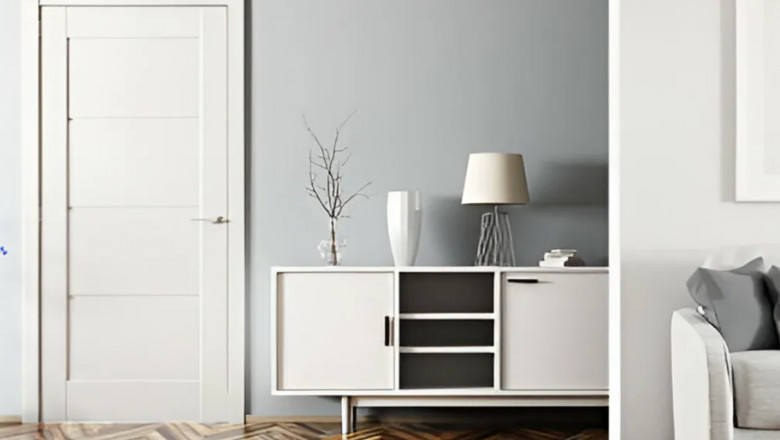views
When it comes to installing doors in a home or commercial space, prehung doors are a popular choice due to their convenience and ease of installation. Whether you're renovating, building a new home, or simply replacing an old door, understanding the differences between prehung interior doors and other types of prehung doors can help you make an informed decision. This guide explores what prehung doors are, their advantages, installation process, and key considerations when purchasing them.
What Are Prehung Doors?
A prehung door is a complete door system that comes pre-assembled in a frame (jamb), with hinges already attached. Unlike slab doors (which are just the door itself), prehung doors include all the necessary components for installation, such as:
-
The door slab
-
The door frame (jamb)
-
Hinges (usually three for interior doors)
-
A pre-cut strike plate recess for the door latch
-
Sometimes, a pre-installed door latch or lockset
Prehung doors are categorized into two main types:
-
Prehung Interior Doors – Designed for use inside the home (bedrooms, bathrooms, closets).
-
Prehung Exterior Doors – Built for exterior entryways, offering enhanced security and weather resistance.
This article focuses primarily on prehung interior doors, but many principles also apply to exterior prehung doors.
Advantages of Prehung Interior Doors
1. Easier and Faster Installation
Since the door comes pre-attached to the frame with hinges, installation is much simpler than hanging a slab door. This is especially helpful for DIYers or contractors looking to save time.
2. Proper Alignment
Prehung doors are factory-aligned, meaning the hinges and frame are perfectly positioned to prevent issues like sticking or misalignment.
3. Better Insulation and Soundproofing
Many prehung interior doors come with weatherstripping or seals that improve sound insulation—ideal for bedrooms, offices, or bathrooms.
4. Consistent Quality
Because they are manufactured in controlled environments, prehung doors typically have fewer defects than site-built frames.
5. Variety of Styles and Materials
Prehung interior doors are available in numerous designs, including:
-
Solid wood (oak, maple, cherry)
-
Hollow-core (lightweight, affordable, less soundproof)
-
Solid-core (better durability and noise reduction)
-
Glass-paneled (for added light and aesthetics)
Disadvantages of Prehung Doors
While prehung doors offer many benefits, they also have some drawbacks:
-
Higher Cost – More expensive than slab doors due to the included frame and hardware.
-
Heavier and Bulkier – Harder to transport and maneuver during installation.
-
Limited Customization – Modifications (like resizing) are more difficult than with slab doors.
Prehung Interior Doors vs. Slab Doors
| Feature | Prehung Interior Door | Slab Door |
|---|---|---|
| Components Included | Door, frame, hinges, sometimes latch | Only the door slab |
| Installation Difficulty | Easier (already hinged) | Harder (requires precise hinge mortising) |
| Alignment | Factory-aligned | Must be aligned manually |
| Cost | More expensive | More affordable |
| Customization | Limited | Easier to trim or modify |
| Best For | New construction, full replacements | Door replacements where frame is intact |
How to Install a Prehung Interior Door
Installing a prehung interior door is a straightforward process if you follow these steps:
Tools Needed:
-
Level
-
Shims
-
Hammer & nails or screwdriver & screws
-
Drill
-
Utility knife
-
Tape measure
Step-by-Step Installation:
-
Remove the Old Door and Frame (if replacing).
-
Check the Rough Opening – Ensure the prehung door fits (usually 2" wider and taller than the door).
-
Insert the Prehung Door – Place it into the opening, ensuring it’s plumb and level.
-
Secure the Frame – Use shims to adjust alignment, then nail or screw the frame into place.
-
Test the Door Swing – Ensure it opens and closes smoothly without sticking.
-
Install Trim and Casing – Cover gaps with molding for a finished look.
Choosing the Right Prehung Interior Door
When shopping for prehung interior doors, consider the following factors:
1. Door Material
-
Solid Wood – Durable and high-end but expensive.
-
Hollow-Core – Lightweight and budget-friendly but less sturdy.
-
Solid-Core – Good balance of weight, soundproofing, and affordability.
2. Size and Swing Direction
-
Measure the rough opening carefully.
-
Determine if you need a left-hand or right-hand swing door.
3. Style and Design
Choose a door that matches your home’s aesthetic:
-
Panel doors (traditional)
-
French doors (elegant, with glass panels)
-
Barn doors (sliding, space-saving)
-
Pocket doors (sliding into the wall)
4. Finish Options
-
Pre-primed (ready for painting)
-
Pre-finished (stained or painted at the factory)
5. Fire-Rated Options (for safety compliance in some areas)
Where to Buy Prehung Interior Doors
Prehung doors are available at:
-
Home improvement stores (Home Depot, Lowe’s)
-
Specialty door retailers
-
Online marketplaces (Amazon, Wayfair)
-
Custom door manufacturers
Conclusion
Prehung interior doors offer a convenient, time-saving solution for home renovations and new construction. Their pre-assembled design ensures proper alignment, reduces installation errors, and provides a professional finish. While they may cost more than slab doors, the ease of installation and consistent quality make them a worthwhile investment.
Before purchasing, consider the door material, size, style, and finish to ensure it meets your needs. Whether you're a DIY enthusiast or hiring a professional, prehung doors simplify the process and deliver reliable performance for years to come.
For exterior applications, prehung exterior doors follow similar principles but include additional weatherproofing and security features. Regardless of the project, choosing the right prehung door ensures durability, functionality, and aesthetic appeal.













Comments
0 comment